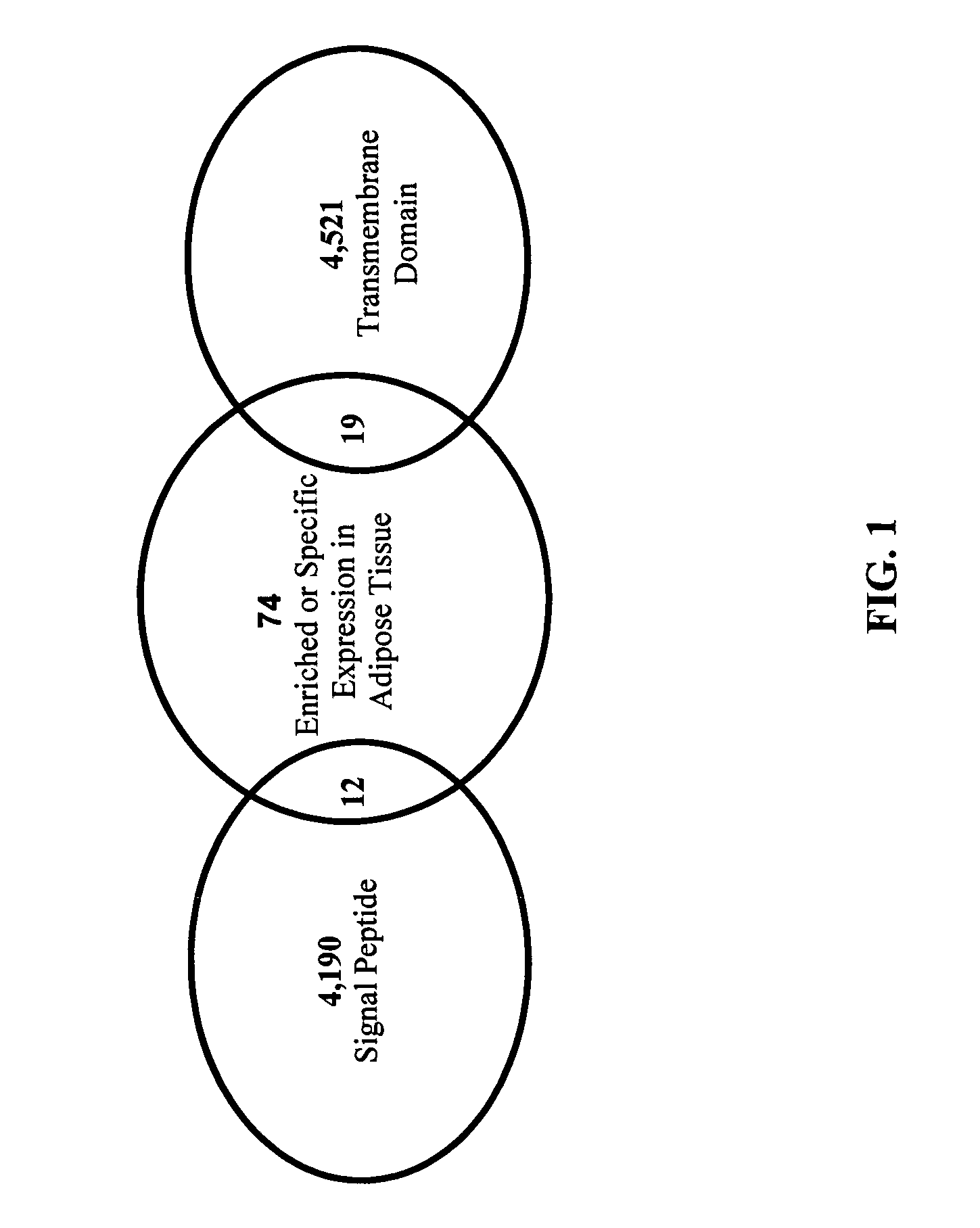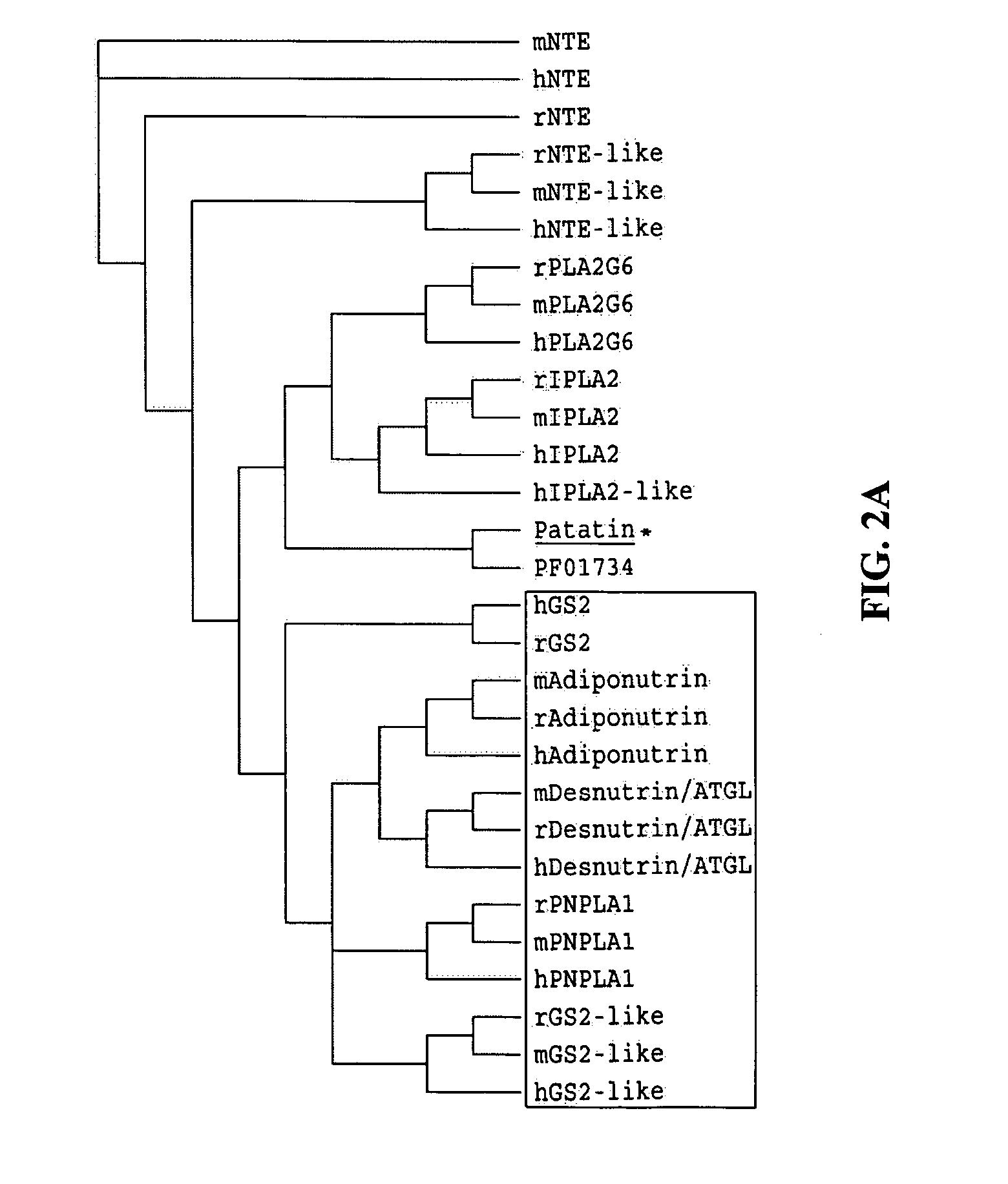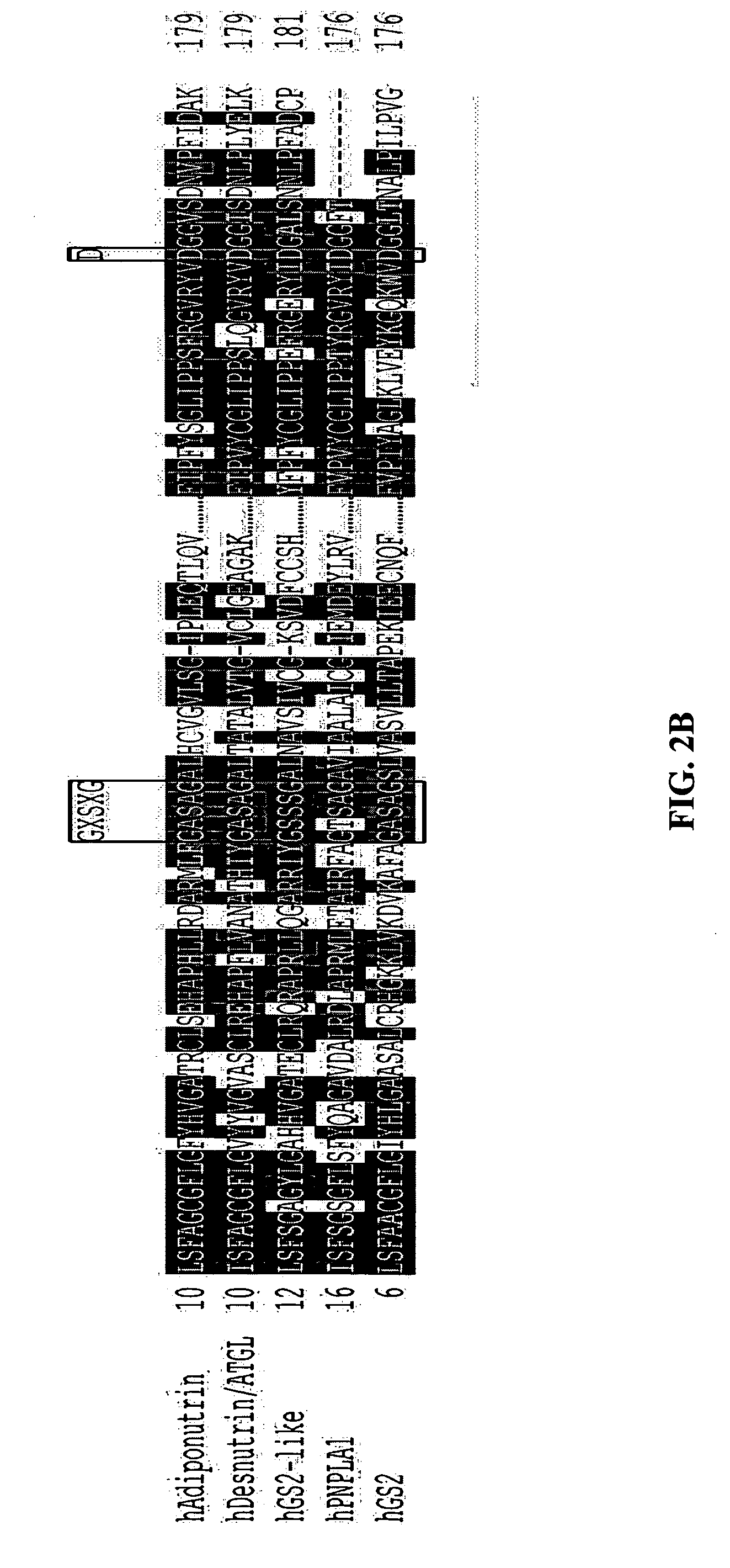Identification of adiponutrin-related proteins as esterases and methods of use for the same
- Summary
- Abstract
- Description
- Claims
- Application Information
AI Technical Summary
Benefits of technology
Problems solved by technology
Method used
Image
Examples
example 1
Materials and Methods—Bioinformatic Analysis
[0175] Two bioinformatics gene lists of human proteins were merged to obtain gene sequences of proteins enriched in or specific to fat tissue. The first gene list was derived from a GeneLogic Bioexpress database. The GeneLogic Bioexpress database, which comprised a random set of expressed genes obtained from microarray analysis, was further narrowed using statistical algorithms to include only genes that were enriched or specific to adipose tissue and omentum fat tissue. The second gene list, which comprised gene sequences encoding proteins that either were secreted or contained a transmembrane domain, was derived from public databases using several bioinformatics tools (e.g., SignalP, Sigcleave, and TMHMM) to identify a signal peptide or a transmembrane domain within the included sequences. Merging of the two gene lists filtered out most non-adipose-tissue-enriched genes, and identified genes specific to or enriched in fat tissue that en...
example 1.2
Results—Identification of Adiponutrin-related Proteins as a Subfamily of Patatin-like Domain-containing Proteins
[0182] Adiponutrin, desnutrin / ATGL, GS2 and GS2-like are characterized by the presence of a patatin-like domain (Gly-X-Ser-X-Gly and Asp-X-Gly / Ala motifs) (Rydel, supra). To identify additional patatin-like domain-containing proteins, a profile HMM was generated and used to search public protein, EST and genomic databases. A total of 10 ortholog patatin families were identified (FIG. 2A). Phylogenetic analysis using patatin as the base sequence clustered adiponutrin, desnutrin / ATGL, GS2-like and GS2 in one branch of the phylogenetic tree (FIG. 2A). The inventors term this the adiponutrin family. A newly identified gene, PNPLA1 (in silico), also clustered with the adiponutrin family (FIG. 2A). The conserved residues of the patatin-like domain are present in all adiponutrin family members (FIG. 2B). Additionally, N-terminal patatin-like domains and variable C-terminal domai...
example 2
Expression and Regulation Profiles of Adiponutrin Family Members
PUM
| Property | Measurement | Unit |
|---|---|---|
| Energy | aaaaa | aaaaa |
Abstract
Description
Claims
Application Information
 Login to View More
Login to View More - R&D
- Intellectual Property
- Life Sciences
- Materials
- Tech Scout
- Unparalleled Data Quality
- Higher Quality Content
- 60% Fewer Hallucinations
Browse by: Latest US Patents, China's latest patents, Technical Efficacy Thesaurus, Application Domain, Technology Topic, Popular Technical Reports.
© 2025 PatSnap. All rights reserved.Legal|Privacy policy|Modern Slavery Act Transparency Statement|Sitemap|About US| Contact US: help@patsnap.com



